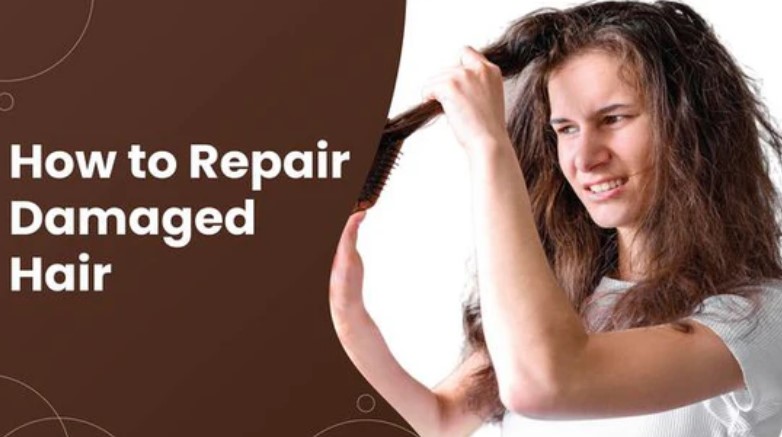Establishing the perfect hair growth serum routine tailored to your hair type can make a significant difference in the health and appearance of your hair. Whether your hair is curly, straight, wavy, thick, thin, oily, or dry, understanding your specific needs is crucial. Here’s a comprehensive guide to help you create a personalized hair care regimen:
1. Identify Your Hair Type
The first step in establishing an effective hair care routine is to identify your hair type. This includes considering the texture, density, porosity, and scalp condition.
Hair Texture
- Straight: Lacks curls and waves; often appears shiny.
- Wavy: Falls between straight and curly; has a loose wave pattern.
- Curly: Has defined curls; prone to frizz and dryness.
- Coily: Very tight curls; often experiences shrinkage and dryness.
Hair Density
- Thick: Has a lot of hair strands per square inch.
- Medium: Moderate hair density.
- Thin: Fewer hair strands, often making the scalp more visible.
Hair Porosity
- Low Porosity: Hair cuticles are tight; products sit on top rather than absorbing.
- Medium Porosity: Cuticles are slightly raised; balanced moisture retention.
- High Porosity: Highly raised cuticles; absorbs and loses moisture quickly.
Scalp Condition
- Oily: Produces excess sebum; hair may appear greasy.
- Dry: Lacks natural oils; can lead to flaky scalp.
- Normal: Balanced oil production; not too oily or dry.
2. Choose the Right Shampoo and Conditioner
Selecting the right shampoo and conditioner is essential for maintaining hair health. The products you choose should align with your hair type and specific needs.
Shampoo
- For Oily Hair: Look for clarifying shampoos to remove excess oil and buildup.
- For Dry Hair: Use moisturizing shampoos with nourishing ingredients like argan oil or shea butter.
- For Colored Hair: Opt for sulfate-free shampoos to preserve color.
- For Curly/Coily Hair: Choose sulfate-free, hydrating shampoos to maintain moisture.
Conditioner
- For Fine Hair: Lightweight conditioners to avoid weighing down the hair.
- For Thick/Coarse Hair: Rich, moisturizing conditioners to nourish and smooth.
- For Curly/Coily Hair: Use conditioners with hydrating and detangling properties.
3. Determine the Washing Frequency
The frequency of washing your hair depends on your hair type and lifestyle.
Oily Hair
Oily hair may require more frequent washing, typically every other day, to control sebum production.
Dry Hair
For dry hair, washing 1-2 times a week is sufficient to avoid stripping natural oils.
Curly/Coily Hair
Curly and coily hair often benefits from less frequent washing, around once a week, to maintain natural moisture.
Normal Hair
Normal hair types can usually wash 2-3 times a week.
4. Incorporate Treatments and Masks
Regular treatments and masks can provide your hair with extra nourishment and address specific concerns.
Hair Masks
- For Damaged Hair: Use protein-rich masks to strengthen and repair.
- For Dry Hair: Hydrating masks with ingredients like honey or avocado.
- For Frizzy Hair: Smoothing masks with keratin or silicone.
Leave-In Conditioners and Oils
- For Fine Hair: Lightweight leave-ins to add moisture without weighing down the hair.
- For Thick Hair: Rich oils like coconut or castor oil to seal in moisture.
- For Curly Hair: Leave-in conditioners and curl creams to define curls.
5. Style with Care
Styling techniques and tools can significantly impact the health of your hair.
Heat Styling
- Use Heat Protectants: Always apply a heat protectant before using styling tools like straighteners or curling irons.
- Limit Heat Use: Reduce the use of heat styling tools to prevent damage.
Air Drying
Air drying is a healthier alternative to blow drying. If you must blow dry, use a low heat setting and a diffuser attachment.
Protective Styles
For those with curly or coily hair, protective styles like braids, twists, or buns can minimize damage and maintain hair health.
6. Regular Trims
Regardless of hair type, regular trims are essential to remove split ends and promote healthy hair growth. Aim for a trim every 6-8 weeks.
7. Protect Your Hair
Protect your hair from environmental factors that can cause damage.
Sun Protection
Use products with UV protection or wear a hat when exposed to the sun.
Sleep Protection
Sleep on a silk pillowcase or wear a silk scarf to reduce friction and prevent breakage.
8. Listen to Your Hair
Your hair’s needs can change due to factors like weather, diet, and overall health. Pay attention to how your hair responds to your routine and be willing to adjust products and practices as needed.
Conclusion
Establishing the perfect hair serum for your hair type involves understanding your unique hair characteristics and choosing products and practices that support your hair’s health and appearance. By identifying your hair type, selecting suitable shampoos, conditioners, and treatments, and being mindful of styling and environmental factors, you can achieve and maintain beautiful, healthy hair. Remember, consistency and patience are key—your hair will thank you!




One thought on “How to Establish the Perfect Hair Care Routine for Your Hair Type”